Educational Experiences at the Barr Lake Banding Station
The Barr Lake Banding Station sits on the eastern edge of the Lake, nestled in a riparian area along the beach. Not only is it a migratory bird’s dream stopover, it’s also an environmental educator’s ideal teaching location.
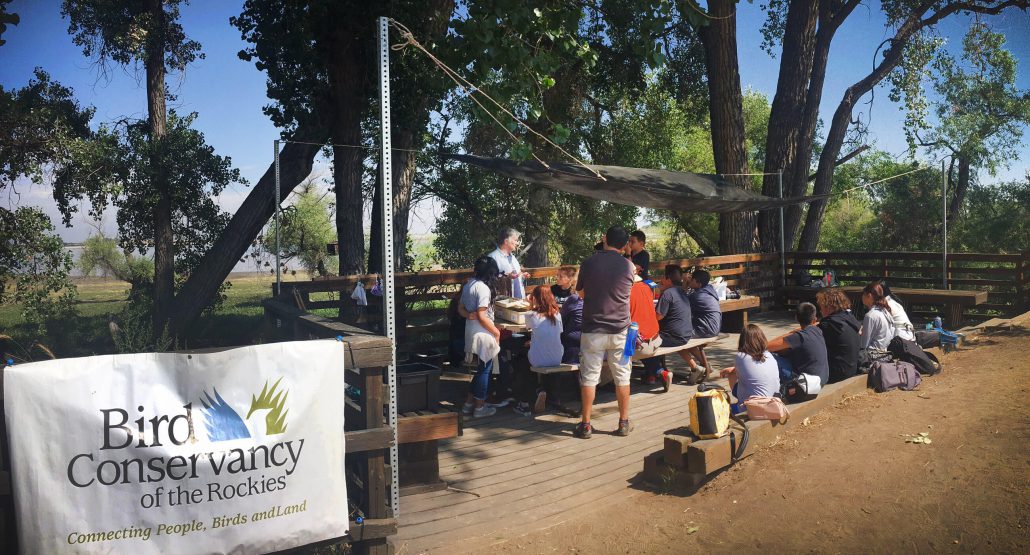
Visitors at the Barr Lake Banding Station. Photo: Kelsey Mazur
Fall banding is a busy time and one of the most hands-on ways we get students, families, and the community involved with our work. It will take approximately 40 volunteers over the duration of the season, making net runs, banding birds, and leading educational programming to run the banding station and lead the more than 30 programs scheduled with a projected 1020 participants for this upcoming seven-week season.
The purpose of all our programming is to get people outside, help them feel comfortable in nature, and ask questions in order to become curious about the natural world. What better way to do that than through the lens of bird banding?
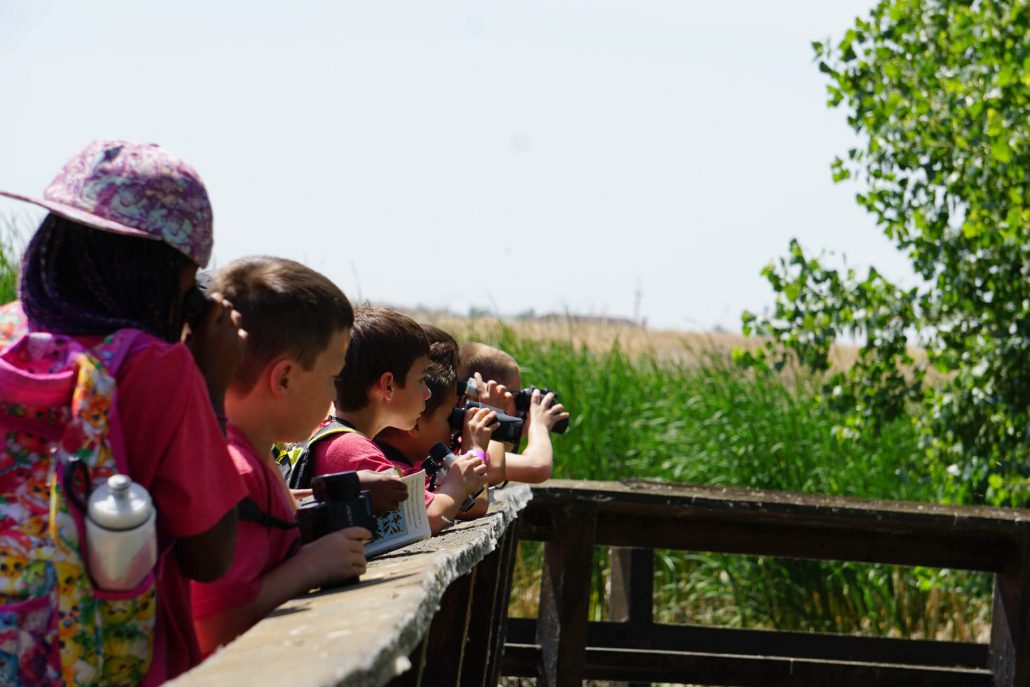
Students work together to identify a bird off the boardwalk. Photo: Kelsey Mazur
Imagine a school group arriving at the Barr Lake Nature Center. They are eagerly sitting on the bus, peering out the windows to see the lake for the first time, to see birds flitting around the prairie. They get off the bus and are greeted by enthusiastic staff and volunteers (even after all this time, we still love to see the birds at the station too). Students practice inquiry as they go on a bird walk, learning how to use binoculars and field guides, asking questions about what they’re seeing, and honing their identification skills. With the goal of the walk being exploration, students have the chance to look and learn about all facets of the habitat and find something that interests them.
Next, students become birds and make their way through an obstacle course of migration challenges to learn about the difficulties birds face during their journey. Finally, students take all they’ve learned about birds, migration, and the natural world and head to the banding station. It is here that they get to meet our bander, see birds right up close, observe the banding process in action, and (if they’re lucky) release a bird. Migration is an abstract concept for many students; by seeing the birds up close and personally, migration (as well as nature) becomes more relatable. For example, I always love to share the spiders with the students; while spiders are a nutritious snack for birds, they also have an important role in the ecosystem and not nearly as dangerous as people think—but that’s another blog post altogether!
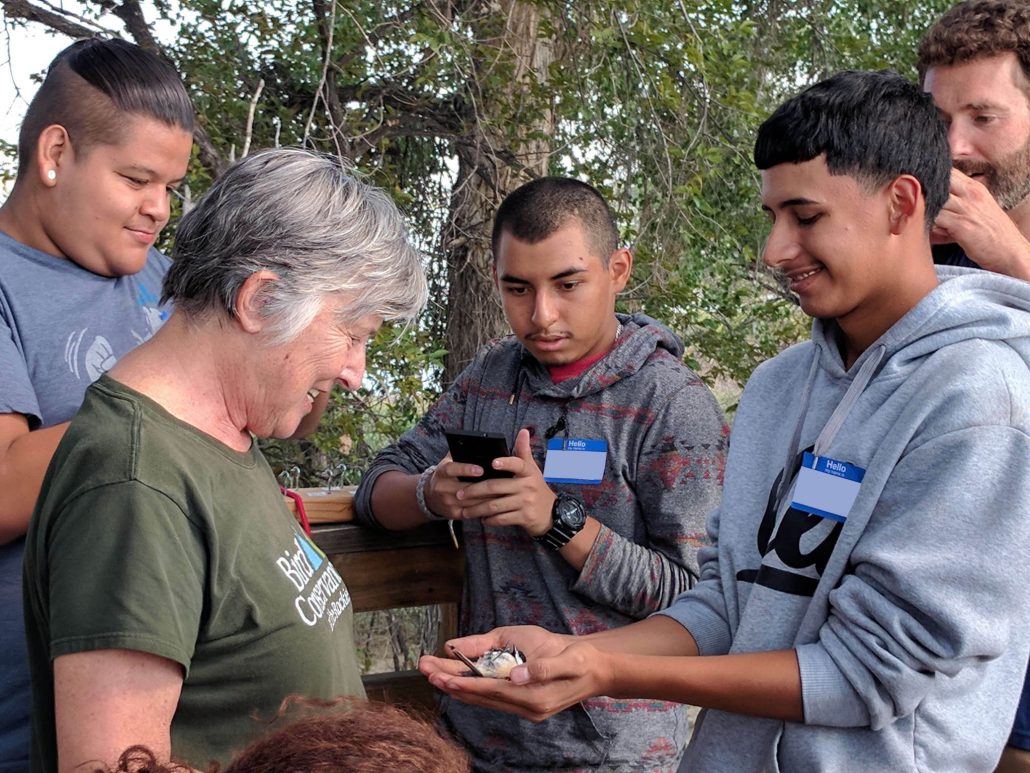
A group of high school students release a Black-Capped Chickadee from the Banding Station in 2017. Photo: Bird Conservancy of the Rockies
It’s not always the questions they ask, the facts they rattle off, or the giddy excitement, but the wide-eyed look of wonder on their face that warms an educator’s heart. Students that have never seen a bird in their yard are able to identify a Wilson’s Warbler by the end of the day. They just learned how to use binoculars and field guides and are already putting those skills to use to identify an American White Pelican they spotted on the lake. It is truly a transformative experience that leads to so much more: data analysis and mapping, natural history, exploration, and a love for the outdoors. Bird banding instills wonder and sparks curiosity.
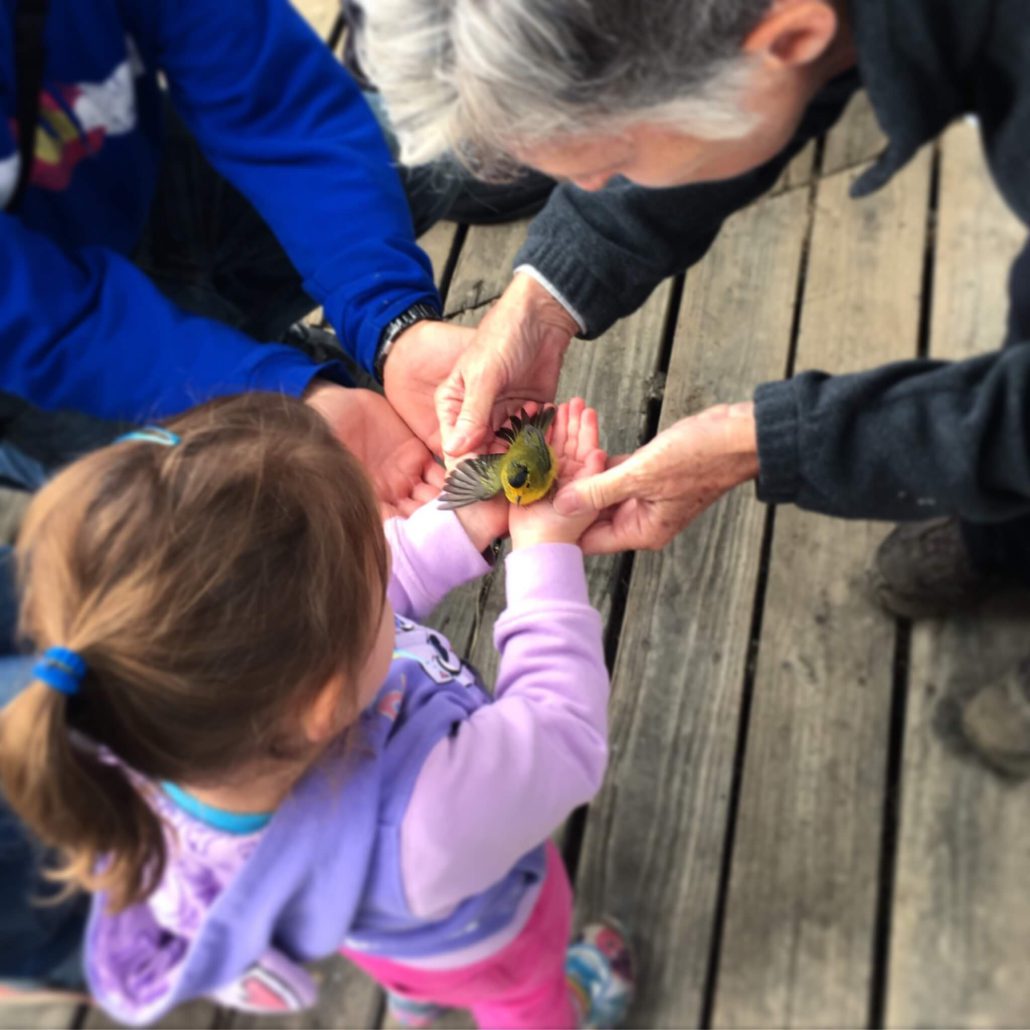
A toddler releases a Wilson’s Warbler at the Barr Lake Banding Station. Photo: Kelsey Mazur
Students who have participated in banding programs in the past, either through homeschool groups, Bird Camp, or at other events, are beginning to volunteer at the station. It is the practical next step after their curiosity was first piqued—a bird in the hand can spark a life-long passion.
We are dedicated to providing a high-quality experience for all visitors at the station, and want everyone to leave feeling more comfortable in nature with an interest in birds, their habitats, and conservation. By providing a quite literal hands-on experience, we are sharing the important work we do as scientists here at Bird Conservancy and educating and inspiring the next generation of conservationists.
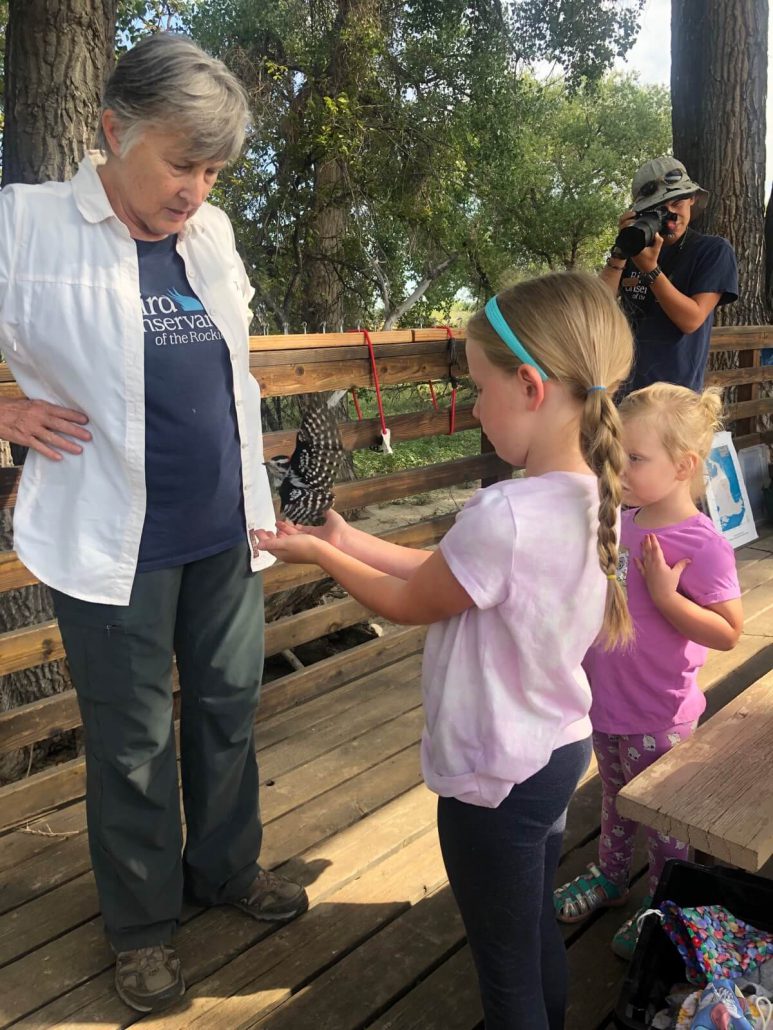
Bird Bander Meredith McBurney assists young visitors as the release a bird back into the wild at the 2019 Barr Lake Fall Bird Festival. Photo: Cynde Barnes
The annual fall bird migration is getting underway as birds head south for the winter! Visit one of our fall banding stations for a chance to see live birds up close and wish them well on their journey.
Bird Conservancy operates banding stations each fall in Colorado, Nebraska and the Dakotas. Hours of operation vary and are subject to weather conditions. Individual visitors and group/school visits are welcome. Registration is recommended or required for all stations.
To schedule a school or group visit to Barr Lake Banding Station, please contact Kelsey Mazur by email or phone: (303) 659-4348 x10
Visit our Bird Banding page for more information about our banding program and locations.


